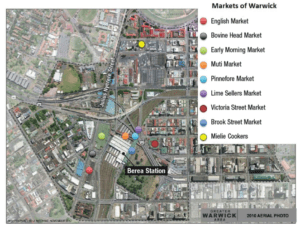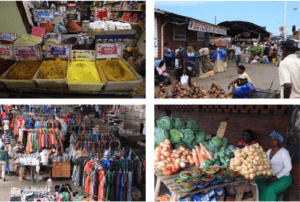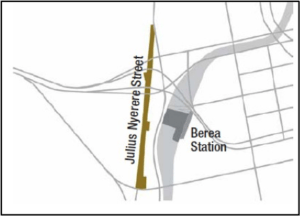Top Story
PANELS FOR SOUTH AFRICAN CITIES
The ULI Advisory Services program has conducted a series of panels in the Republic of South Africa. These panels have been conducted at the request of the World Bank in cooperation with the National Treasury of South Africa. These panels are provided to the National Treasury and to participating metropolitan areas that draw on the World Bank’s global experience and network of urban experts. The National Treasury’s Cities’ Support Programme (CSP) is a unit within the National Treasury that provides technical assistance to cities in South Africa. That assistance is aimed at helping cities manage the built environment in a way that promotes economic growth, job creation, access to basic services, environmental sustainability, and public accountability.
Durban, South Africa
Date: February 22–27, 2015
Location: Durban and the eThekwini Municipality, South Africa
Sponsor: The World Bank and the South African National Treasury
Subject Area: Revitalization of Warwick Junction
Panel Chair: William P. Kistler, Managing Partner, Kistler & Company, London, United Kingdom
Download Full Report
Background and Panel Assignment
 Durban and the eThekwini Municipality, located on the Indian Ocean, constitute the second-most-populous metropolitan area in South Africa. Durban is famous for being the busiest port in Africa. The city is also viewed as a major center of tourism because of its climate and extensive beaches.
Durban and the eThekwini Municipality, located on the Indian Ocean, constitute the second-most-populous metropolitan area in South Africa. Durban is famous for being the busiest port in Africa. The city is also viewed as a major center of tourism because of its climate and extensive beaches.
Warwick Junction, located west of Durban’s central business district (CBD) near Berea Station, is a collection of formal and informal markets and the infrastructure that caters to the 450,000 people who move through the area daily. Warwick is the gateway to the Durban CBD, and positive action in Warwick will invariably affect the CBD. It is es¬sential that all levels of government—national, provincial, and municipal—believe in the ongoing importance of Durban’s CBD. The panel suggested that stakeholders be prepared to address and prioritize the improvement of Warwick by taking the necessary action to restore the health of the CBD and to make it a vibrant, attractive, and safe place where the people of Durban will again be keen to live, work, and play.
Summary of Recommendations
 The panel’s primary recommendations include the following:
The panel’s primary recommendations include the following:
- Establish a set of ten principles to help guide the city and the district’s stakeholders so that going forward, every action contemplated can be measured and judged as it is conceived, planned, and implemented.
- Recognize and take advantage of the huge daily influx of workers who pass through Warwick Junction. Recognize the market opportunities that such an influx brings to a specific area with regard to buying power, social cohesion, and synergies.
- Improve various components of the public realm (such as sidewalks, crosswalks, directional signage, and landscaping) and improve safety and security.
- Undertake important catalytic projects, including social housing, student housing, the development of the Berea Station, and the transformation of Julius Nyerere Street into a pedestrian corridor.
- Understand and leverage the transportation improvements being implemented by the city, especially bus rapid transit.
- Establish new approaches to managing Warwick Junction, including a new project management structure on the city side with the appointment of a new Programme Executive, regular progress meetings, and short-term actions that will improve the cleanliness and safety of the area.
